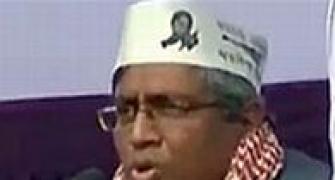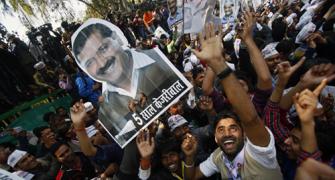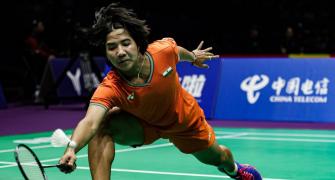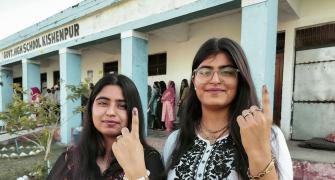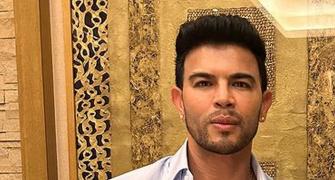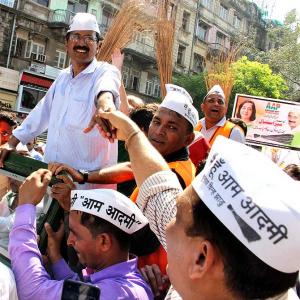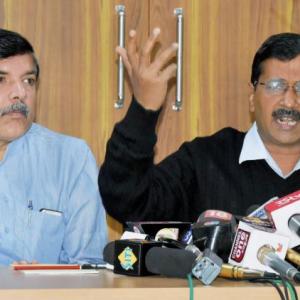Can un-democracy be the foundation for a democratic party that aspires to be different from all other parties in India, asks Aditi Phadnis.

Kamal Mitra Chenoy, social activist for 30 years, member of the Communist Party of India for 40 years, joined the Aam Aadmi Party in 2014.
He explained why he was resigning from the CPI. “This is a critical time for Indian secularism. It is naive to say that AAP has no theory. As Gramsci repeatedly stressed, all people in some way or another are intellectuals. His major distinction was between traditional intellectuals who defend and legitimise traditional ideologies and the monopolist use of power. Their rivals, essential for change and even a revolution, are organic intellectuals who are rooted in popular movements and popular culture,” he said in a signed article.
Chenoy quit AAP barely two years later. In a personal exit note to Arvind Kejriwal, the party’s chief, he suggested a course correction and getting rid of a coterie that surrounded him. Clearly, monopolist use of power was rearing its head again.
In a more unsophisticated way, all the supporters-turned-critics of the AAP are saying the same thing today. That when everyone is forced to think like the boss, no one thinks very much. Can un-democracy be the foundation for a democratic party that aspires to be different from all other parties in India?
In its short life, AAP has distinguished itself in many governance spheres. But, party democracy is not one of these. This was clearly evident in the events in Punjab, the outbreak of rebellion in Delhi after a debilitating defeat in the municipal elections and the way Prashant Bhushan and Yogendra Yadav were thrown out of the party in 2015.
Bhushan, Yadav and Anand Kumar were charged with undermining AAP’s efforts to win the Delhi assembly elections. All strongly refute this, saying they were only trying to make AAP operate in a more democratic way.
Sucha Singh Chhotepur, an independent-minded legislator in Punjab, left the Shiromani Akali Dal and joined AAP before the 2014 elections. AAP leaders say his oratory impressed Kejriwal, who heard him for the first time in Gurdaspur. When AAP lost two assembly by-elections, Kejriwal asked Chhotepur to keep the party afloat in Punjab. But, Chhotepur is not a complaisant individual. AAP says they have him on video accepting a packet of money. Even his rivals say they could fault Chhotepur on many grounds but corruption was not one of these. Chhotepur himself says he was turfed out when he refused to be a yes-man to Kejriwal and his ‘coterie’.
With so many exits from the party, the last thing Kejriwal and his colleagues wanted was the exit of someone as articulate and visible as Kumar Vishwas. Insiders in the party say Vishwas does not have too much following in its Political Affairs Committee . He is a poet, a gifted speaker and popular among party volunteers. But, many in the PAC see him as too individualistic, a man who does his own thing, has little time to devote to the party.
The turning point was a video made by Vishwas around the attacks on security forces in Kashmir. He touches upon the Kashmir issue and condemns the “humiliation” of jawans in the Valley but then segues to another message: “If you form a government in Delhi with a promise to wipe out corruption and then try to protect those under the corruption scanner, you will be questioned,” Vishwas says in Hindi.
Asking people to go beyond personality cults such as “Modi-Modi, Arvind-Arvind, Rahul-Rahul, India is Indira”, he says governments will last a brief while but the country is 5,000 years old.
The video caused a stir for two reasons. It came as the campaign for the Delhi municipal elections was at a height and it attacked Kejriwal without naming him. When the results were out, Vishwas turned the knife by saying it was not electronic voting machines that should be blamed for the AAP’s defeat, and that the party needed to introspect.
This was a new bomb for Kejriwal, already battered by the Punjab and Delhi setbacks. So, he and deputy Manish Sisodia embarked on a different strategy: Vishwas was too important to let go. But, he needed to be brought down a peg or two and his charisma needed to be tempered. At a meeting of the PAC, Amanatullah Khan, MLA from a South Delhi seat, embarked on a frontal attack, specifically on the video’s contents. Others listened as Khan tore into Vishwas.
Khan is popular in his seat and now the only noted minority face in the PAC, two others having been compromised on graft charges. When he criticised Vishwas, everyone was convinced the AAP was again on the verge of a split.
But, what if the attack on Vishwas was a sanctioned hit? Kejriwal went to Vishwas’ home, brought him to his own home, referred to him as his ‘brother’ and lavished him with attention. Equally, Khan was ‘punished’ -- he was dropped from the PAC and suspended from the party. But, it escaped no one that Sisodia took the trouble of visiting Khan at his home after he was ‘suspended’.
Vishwas has been placated by the offer of a new appointment -- convenor of the Rajasthan unit. However, a Rajasthan election is not crucial or even so near. The party hasn’t even decided whether it will contest Gujarat and Himachal Pradesh, the next in line. So, many in the party and outside believe this particular stand-off was a fixed fight -- designed to show Vishwas his place, while making sure he had no excuse to leave the party.
The last word on the rift in the AAP has not been spoken yet. Rivals are snapping at the AAP’s heels, they are strong and have state power at their command. Hamstrung as it is, the Delhi government’s experiments in education, power and health have caught the imagination. But, can you really deliver democratic results through undemocratic means? This is the paradox AAP needs to resolve.
On October 2, 2012: On Gandhi Jayanti, Arvind Kejriwal announced the formation of his political party in Delhi
On November 24, 2012: He named it ‘Aam Aadmi Party
During 2013, Kejriwal held rallies across Delhi, gathering support and attacking the Congress government in Delhi over inflated power bills
On December 4, 2013: Delhi went to elections
On December 8, 2013: The AAP made a stunning debut in the Delhi elections, emerging as the second largest party after the BJP
On December 12: The BJP met Delhi Lt Governor Najeeb Jung and said it did
not want to form the government, as it did not have the numbers
On December 13: The Congress, that won eight seats in the Delhi election, submitted a letter of unconditional support for the AAP to the Lt Governor
On December 14: The AAP laid down 18 conditions for the Congress and the BJP for working with it. Kejriwal also sought 10 days time from the Lt Governor to decide on whether he will form the government in Delhi
On December 18: The AAP announced a public referendum to decide whether it should form the government in Delhi with Congress’s support
On December 21: The Congress said the support to the AAP is not unconditional but ‘issue-based’
On December 22: The AAP decided to form the government in Delhi and staked claim



